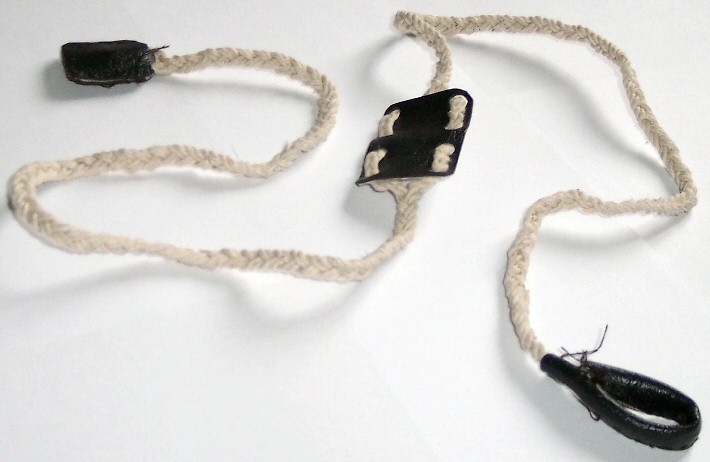1
General D&D Discussion / Re: [A bit of rant] Realism should be the floor, not the ceiling in D&D.
« on: May 29, 2023, 05:04:02 PM »
I've neglected this thread of mine for too long, so I'm back with some ideas on how to handle armor.
I've looked through Rolemaster's armor rules, and while they're interesting they're also not quite what I'm talking about. I have my own ideas for an armor rating system.
Armor Rating: Armor rating is the measure of the protective quality of a piece of armor. The higher the armor rating the more damage the armor prevents (soak) and the harder it is to bypass (protection). Soak absorbs the damage from a successful attack, while protection is the additional amount needed to beat the defender's Dodge or Evasiveness Class (calling it Armor Class just makes no Goddamn sense under these rules) to ignore the armor's soak. An armor’s soak is its rating +5, with an extra +1 every 4 levels, while the armor’s protection is equal to its rating +1.
Armor vs. Damage Type: Historically different types of armor were more resistant or more susceptible to different types of attacks. For example, gambeson decent enough defense against piercing attacks like dagger or sword thrusts, better than nothing at least, average protection against cuts and slashes and good protection against blunt impact, at least for an armor made from padded fabric. While mail has trouble absorbing the force of blunt impact strike but provides good defense against piercing attacks and even better protection against cuts. Under these rules a piece of armor uses their base Armor Rating (AR) against the physical damage type its worst against, whether it's bludgeoning, piercing or slashing, gains a +1 to AR against the damage type its average against and +2 to AR against its most resisted damage type. Gambeson under these rules has a base AR of 2, with mail having a base AR of 5.
Gambeson
Mail
That said, in many cases different armors can be combined with each other, like the above-mentioned gambeson and mail. A suit of gambeson under mail would have a base 7 AR, with a +3 vs. slashing, a +2 vs. bludgeoning and a +1 vs. piercing, with a total effective AR of 10 vs. slashing, 9 vs. bludgeoning and 8 vs. piercing.
Gambeson and mail
As for magical armor, just add the enhancement bonus directly to the Armor Rating of the individual armor piece. This means that an adventurer wearing +3 gambeson and +3 mail would add +3 to both armors' ARs before combining them, for a base AR of 13.
+3 gambeson and +3 mail
I'll probably have to include some soak multiplier for high levels. If anyone is interested, I'll post both my reach and Armor rating rules to the Homebrew section.
Your comment about different armors having different defensive properties and effectiveness versus various weapons reminded me strongly of Rolemaster. They have 10-20 armor categories or types, and a table about how effective each is against various categories or types of weapons.
I thought it a fairly simple method that gave some realism without becoming too cumbersome when our group used it in play.
I've looked through Rolemaster's armor rules, and while they're interesting they're also not quite what I'm talking about. I have my own ideas for an armor rating system.
Armor Rating: Armor rating is the measure of the protective quality of a piece of armor. The higher the armor rating the more damage the armor prevents (soak) and the harder it is to bypass (protection). Soak absorbs the damage from a successful attack, while protection is the additional amount needed to beat the defender's Dodge or Evasiveness Class (calling it Armor Class just makes no Goddamn sense under these rules) to ignore the armor's soak. An armor’s soak is its rating +5, with an extra +1 every 4 levels, while the armor’s protection is equal to its rating +1.
| Armor Rating | Soak | Protection |
1 | 6 | +2 |
2 | 7 | +3 |
3 | 8 | +4 |
4 | 10 | +5 |
5 | 11 | +6 |
6 | 12 | +7 |
7 | 13 | +8 |
8 | 15 | +9 |
9 | 16 | +10 |
10 | 17 | +11 |
11 | 18 | +12 |
12 | 20 | +13 |
+1 | +1 | +1 |
+4 | +1 | +0 |
Armor vs. Damage Type: Historically different types of armor were more resistant or more susceptible to different types of attacks. For example, gambeson decent enough defense against piercing attacks like dagger or sword thrusts, better than nothing at least, average protection against cuts and slashes and good protection against blunt impact, at least for an armor made from padded fabric. While mail has trouble absorbing the force of blunt impact strike but provides good defense against piercing attacks and even better protection against cuts. Under these rules a piece of armor uses their base Armor Rating (AR) against the physical damage type its worst against, whether it's bludgeoning, piercing or slashing, gains a +1 to AR against the damage type its average against and +2 to AR against its most resisted damage type. Gambeson under these rules has a base AR of 2, with mail having a base AR of 5.
Gambeson
| Base Armor Rating (piercing) | Average Armor Rating (slashing) | Best Armor Rating (bludgeoning) |
2 | 3 | 4 |
| Base Armor Rating (bludgeoning) | Average Armor Rating (piercing) | Best Armor Rating (slashing) |
5 | 6 | 7 |
That said, in many cases different armors can be combined with each other, like the above-mentioned gambeson and mail. A suit of gambeson under mail would have a base 7 AR, with a +3 vs. slashing, a +2 vs. bludgeoning and a +1 vs. piercing, with a total effective AR of 10 vs. slashing, 9 vs. bludgeoning and 8 vs. piercing.
Gambeson and mail
| Piercing AR | Bludgeoning AR | Slashing AR |
8 | 9 | 10 |
As for magical armor, just add the enhancement bonus directly to the Armor Rating of the individual armor piece. This means that an adventurer wearing +3 gambeson and +3 mail would add +3 to both armors' ARs before combining them, for a base AR of 13.
+3 gambeson and +3 mail
| Piercing AR | Bludgeoning AR | Slashing AR |
14 | 15 | 16 |
I'll probably have to include some soak multiplier for high levels. If anyone is interested, I'll post both my reach and Armor rating rules to the Homebrew section.




 That said, there are some catches with slings. First, they require years of training to be competent with, more so than even a longbow, and that one requires a good deal of strength training. Second, slings need a lot of room to be swung, so no tight formations, which shouldn't be much of a problem for PCs, who start out more like fantasy special forces than normal soldiers. Third, since you have to take time to load, swing, and then throw the rock/bullet, it takes you more time to shoot a rock or bullet than it does for an archer to shoot, meaning that if they're good enough they can keep shooting and shooting faster than you. Fourth and finally, a sling stone/bullet can't fit through a narrow crack or gap like an arrow. Still a damn good weapon though.
That said, there are some catches with slings. First, they require years of training to be competent with, more so than even a longbow, and that one requires a good deal of strength training. Second, slings need a lot of room to be swung, so no tight formations, which shouldn't be much of a problem for PCs, who start out more like fantasy special forces than normal soldiers. Third, since you have to take time to load, swing, and then throw the rock/bullet, it takes you more time to shoot a rock or bullet than it does for an archer to shoot, meaning that if they're good enough they can keep shooting and shooting faster than you. Fourth and finally, a sling stone/bullet can't fit through a narrow crack or gap like an arrow. Still a damn good weapon though.